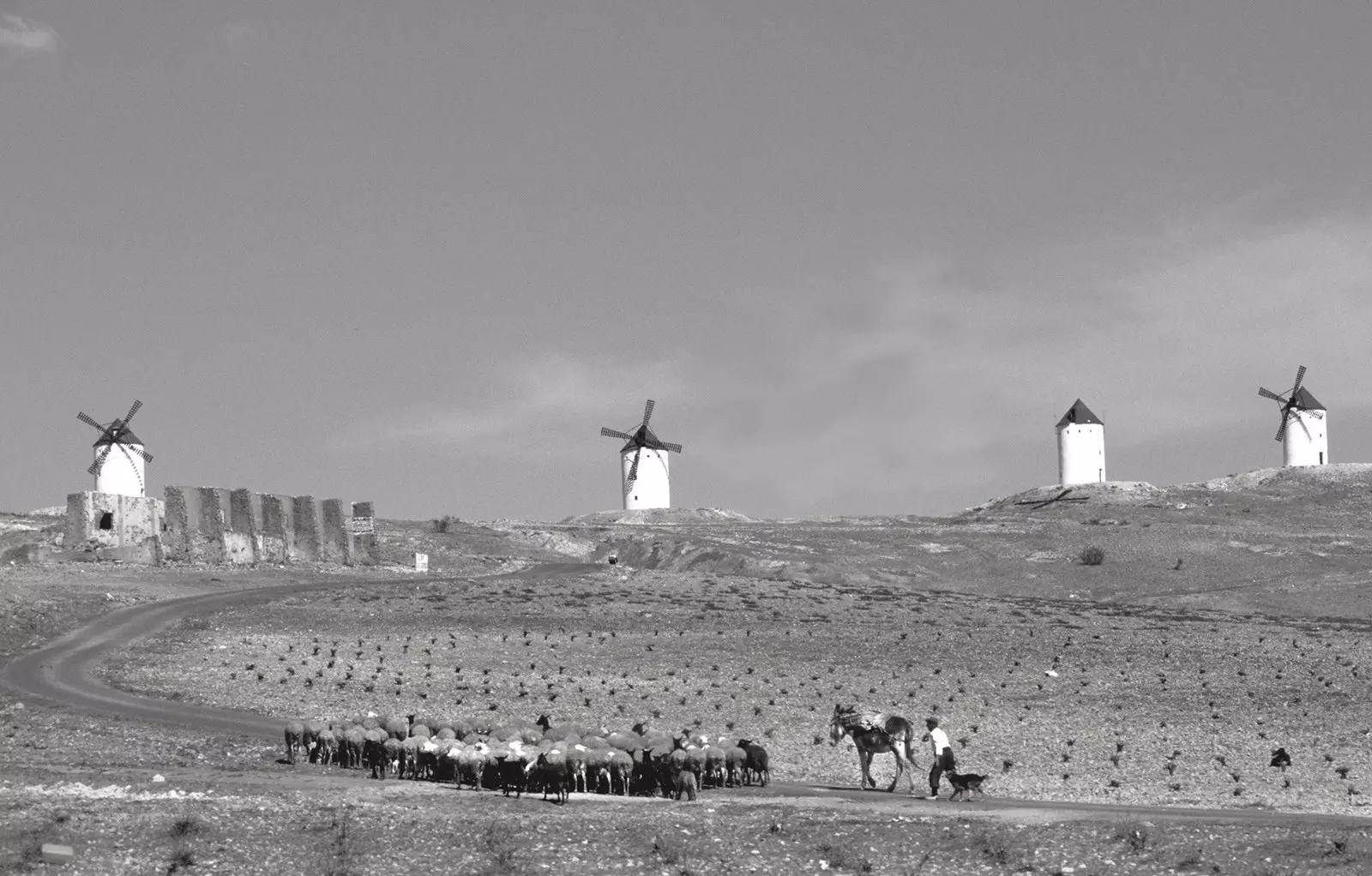
When tourists arrived by mule to Spain
In the eighteenth century the Grand Tour it had become a duty in the training of the young men of the nobility and the upper bourgeoisie of northern Europe. The first tourists toured Switzerland and Italy for two years, and they returned home laden with Canaletto paintings and classical sculptures. The trip was still an intellectual exercise.
Spain I was away. Not only because of transportation difficulties, but because of an imaginary that distinguished it from the rest of the countries of Europe. La Celestina, Don Quixote, Lazarillo, Murillo's beggars and the survival of Islamic customs stirred among themselves. the black legend and the idea of the Oriental.
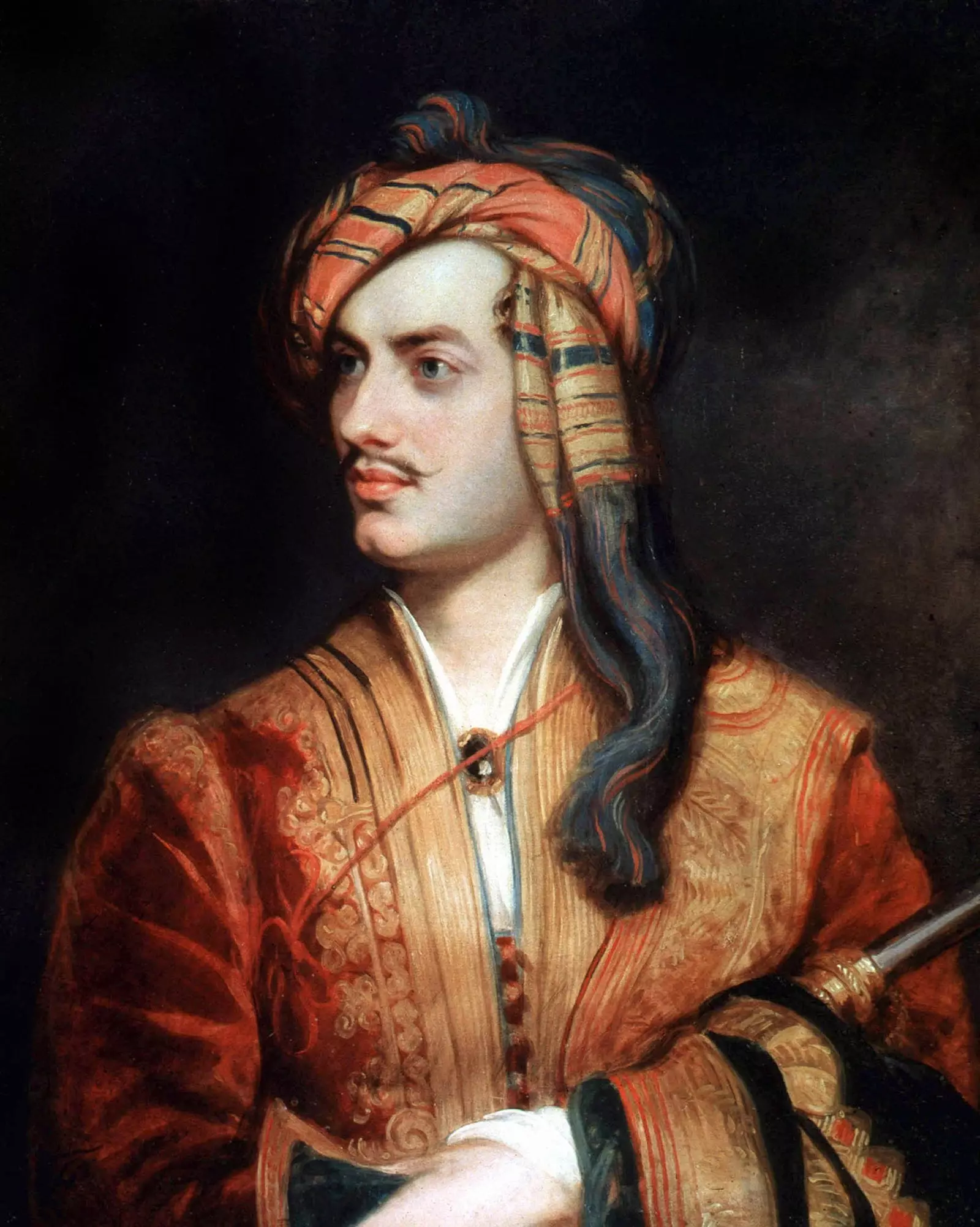
Portrait of Lord Byron
It was the aura of the unknown that attracted Lord Byron in 1809. The enlightened spirit had given way to a different idea of travel. Personal experience prevailed over academics from the landscape and exoticism. Italy had become a cliché; remoteness made Spain attractive.
Byron landed on Lisbon and went through Estremadura and Sierra Morena on horseback. He stopped at Seville . The War of Independence was advancing. Agustina de Aragón walked around the city loaded with medals.
The poet stayed in a house that belonged to two rich single sisters. When he left, one of them, Dona Josefa, cut a long lock of hair and gave it to him.
The freedom in the exercise of the sensuality of the Spanish woman was personified in Carmen de Merimee. This came to Spain for the first time in 1830 , with 26 years.
From the Basque Country , he traversed Castile and, like Byron, headed south. Once beyond the Pyrenees, the cities of the plateau did not offer much interest. ** Andalusia was the destination.**
In Seville, tourists waited for the workers at the exit of the Royal Tobacco Factory. Poverty and harsh working conditions were ignored in favor of a literary picturesqueness. The romantic traveler exalted the subjective, interpreted reality from his perception.
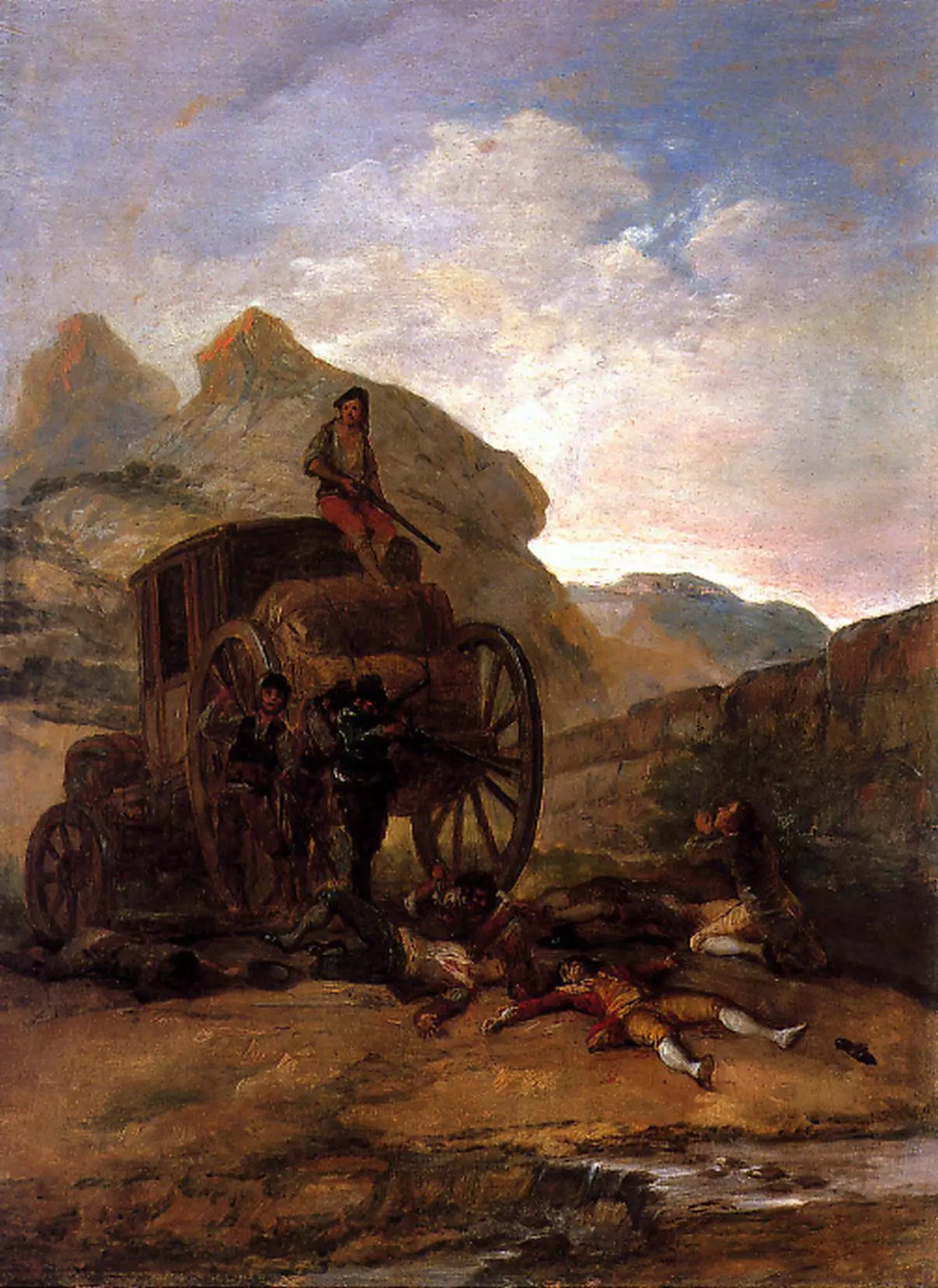
'Assault of Thieves', by Goya
Modern bullfighting had taken shape in the eighteenth century before the rejection of the enlightened, who considered it a barbaric spectacle. mob house , Byron's traveling companion, described with fascination the public's excitement at the death of the picador's horses. In the arena the bullfighter became a hero. Merimée created a female antagonist in Carmen in which she joined the maja, the gypsy and the cigarette girl.
On his second trip, the writer landed in Cadiz and from there he went to Grenade . He claimed that the road was the most romantic in the world. The path, of the horseshoe calls, you could only travel by mule or on horseback, versus the wheel ones.
The latter, paved, which allowed the circulation of proceedings, they were scarce. They departed from Madrid with a radial structure similar to the one that survived in the 20th century: the roads of Aragon, Andalusia, Extremadura and Castile.
The bridleways lacked maintenance and became impassable in the rain. The bandit assaults they were continuous. For the more adventurous traveler, these incidents were part of folklore.
Théophile Gautier speaks of a famous highwayman: the Chopsticks, who acted on the roads of La Mancha and kidnapped caravans for ransom. Many of these characters had harassed the French troops and, at the end of the war, they redirected their ambushes.
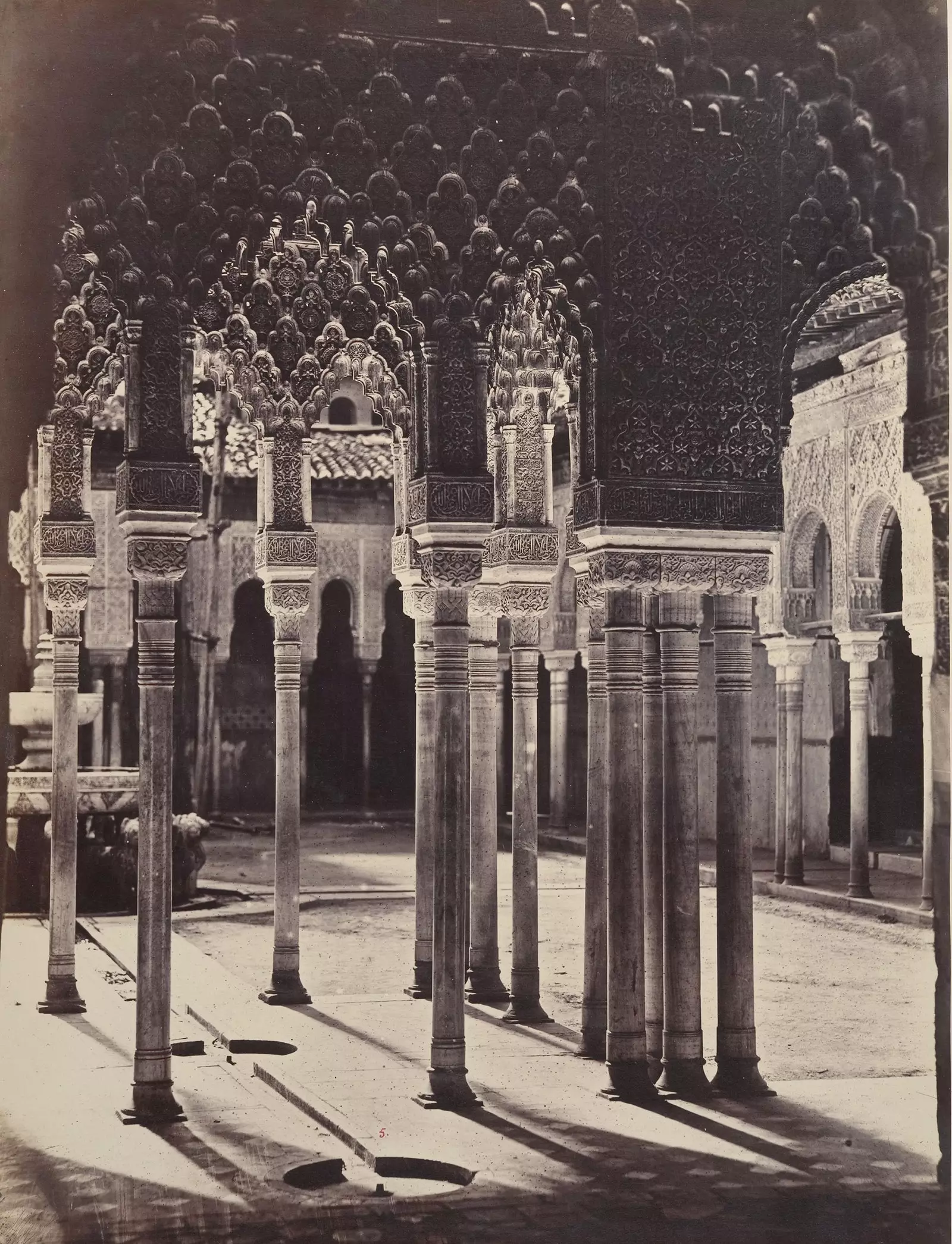
Photograph of the Courtyard of the Lions taken by Charles Clifford in 1862
The situation changed after 1850, when the railway network began to grow and the Civil Guard was established to protect the roads; but the myth had already been fixed. Travelers continued to search for the idea of Spain created in the first half of the century. The types of the bullfighter and the gypsy and the survival of al-Andalus they found an echo in hundreds of travel books, a very popular genre during the 19th century.
The stories sought to add degrees to the cliché through invention. The Baron of Massias, French diplomat, stated that, in the Alameda de Malaga , the men walked with montera. Hans Christian Anderson , known in his time not for his stories but for his travelogues, described the Barcelona cathedral as a mosque and he illustrated the chapter dedicated to the city with a print inspired by the Courtyard of the Lions in the Alhambra.
During a visit by Queen Elizabeth II to Granada, Charles Clifford, the photographer in charge of the Royal Days album, hired a gypsy family for the images of this patio. It was an official publication. The Spaniards themselves had assumed their cliché.
The guides, whose numbers had grown in cities like Toledo or Seville, they claimed to be descendants of Sancho Panza when receiving the traveler. His client became, for a day, Quixote.
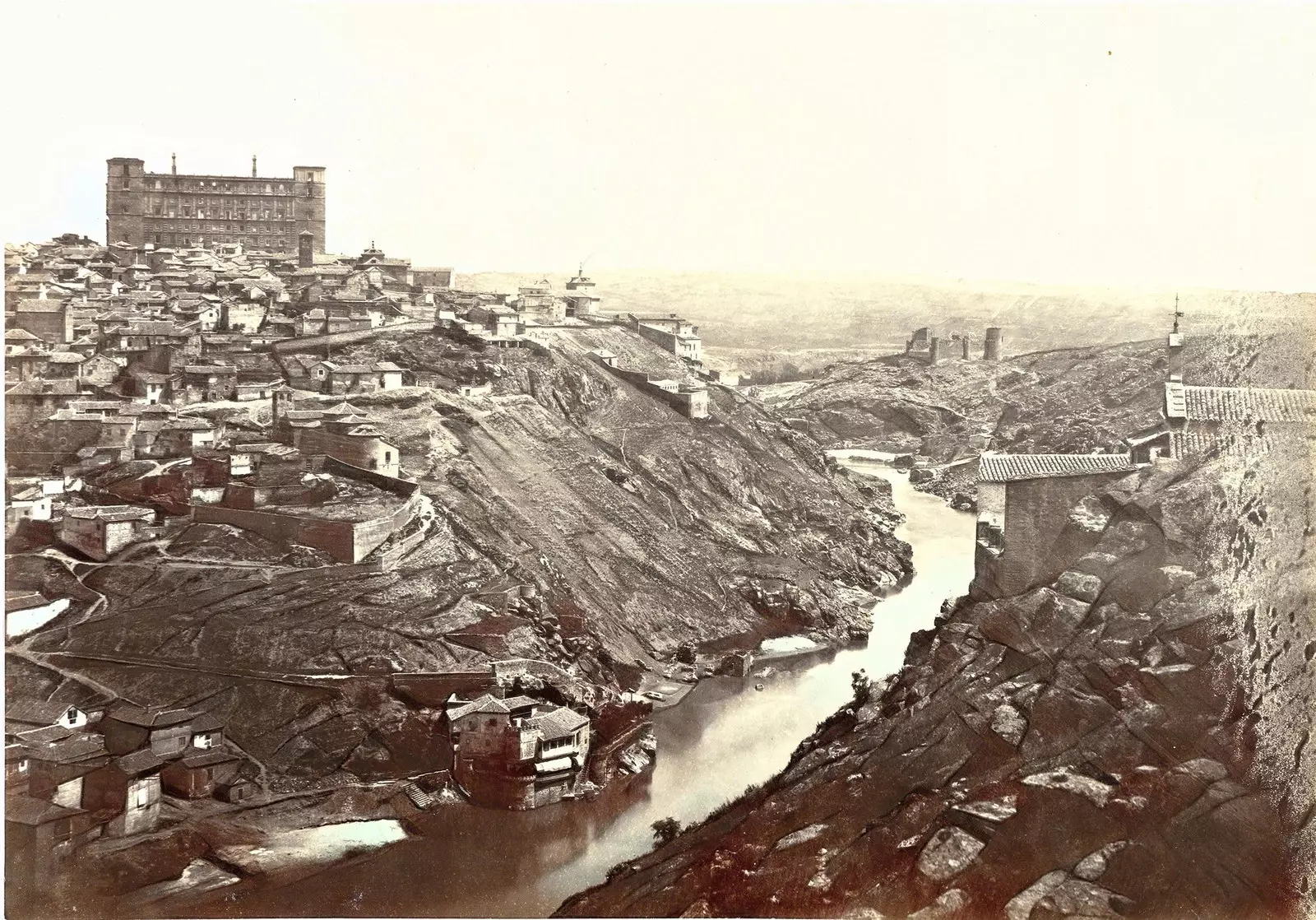
Toledo seen by Charles Clifford
